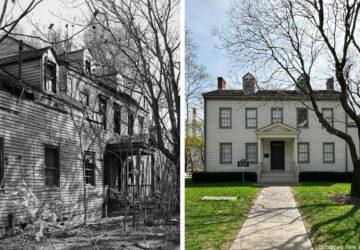3. Flour Riot of 1837
The Flour Riot of 1837 was a one-day food riot in which hungry workers protested rising flour and grain prices. The riot also foreshadowed the Panic of 1837, a financial crisis that heavily impacted the city and the American economy more broadly. President Andrew Jackson had passed an executive order called the Specie Circular, which required payment of land to be in hard money, typically gold or silver. As a result, over 400 banks closed entirely or partially failed, and prices began to rise drastically for products like flour, nearly doubling from around $6 to $12 per barrel.
On February 12, around 5,000 people gathered to protest the price of flour and grain, many poor Irishmen. A speaker of unknown identity supposedly rallied the crowd to protest Hart & Co. to lower the price of flour to its original $8. Workers at Hart & Co. closed all doors and windows except one, which allowed protesters to breach the facility. The mayor was pelted with stones and ice, and after the crowd stormed the warehouse of Herrick and Co., the National Guard was called. About 500 barrels of flour were destroyed, and around 40 people were arrested during the riots. In the end, flour prices did not come down, and the depression continued until 1843.





